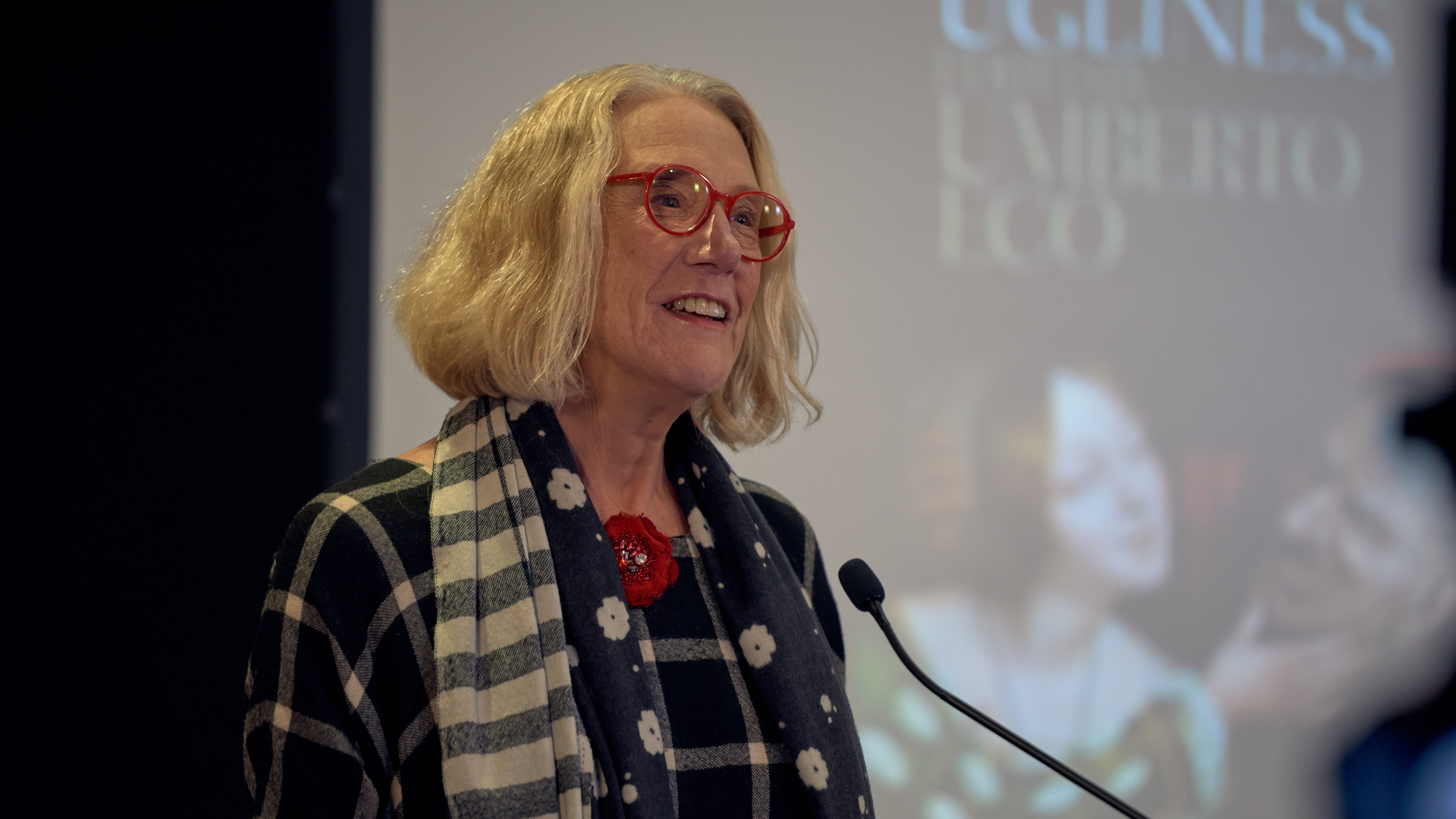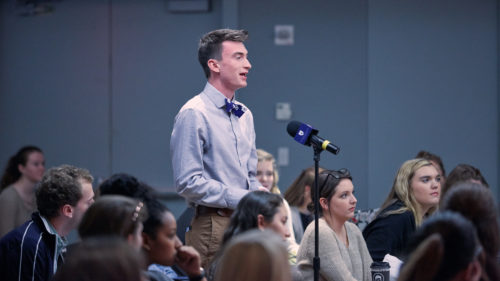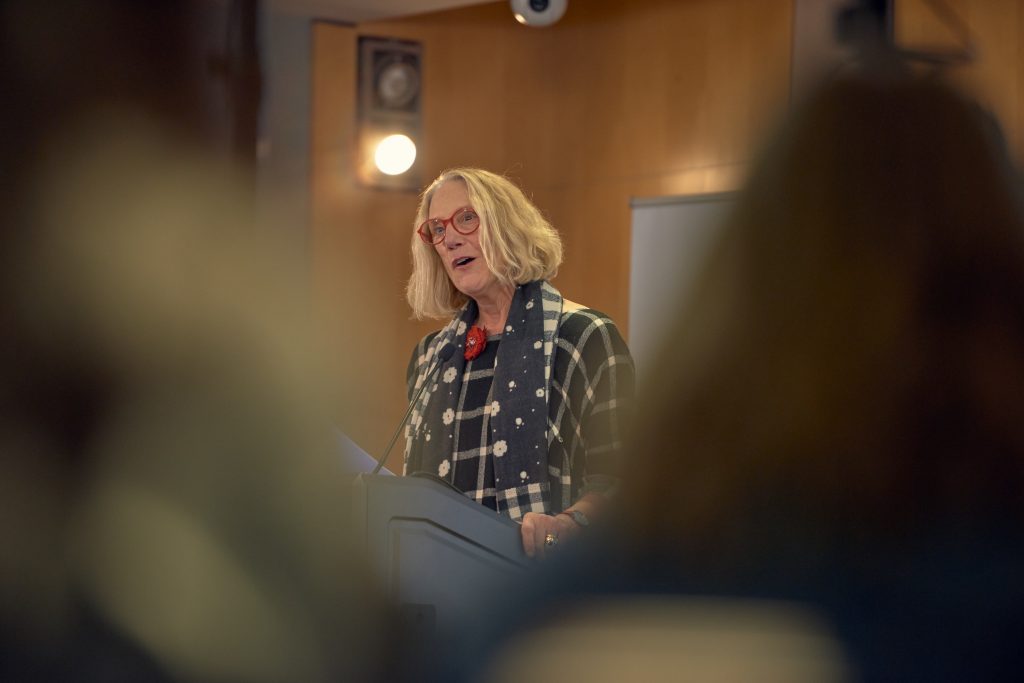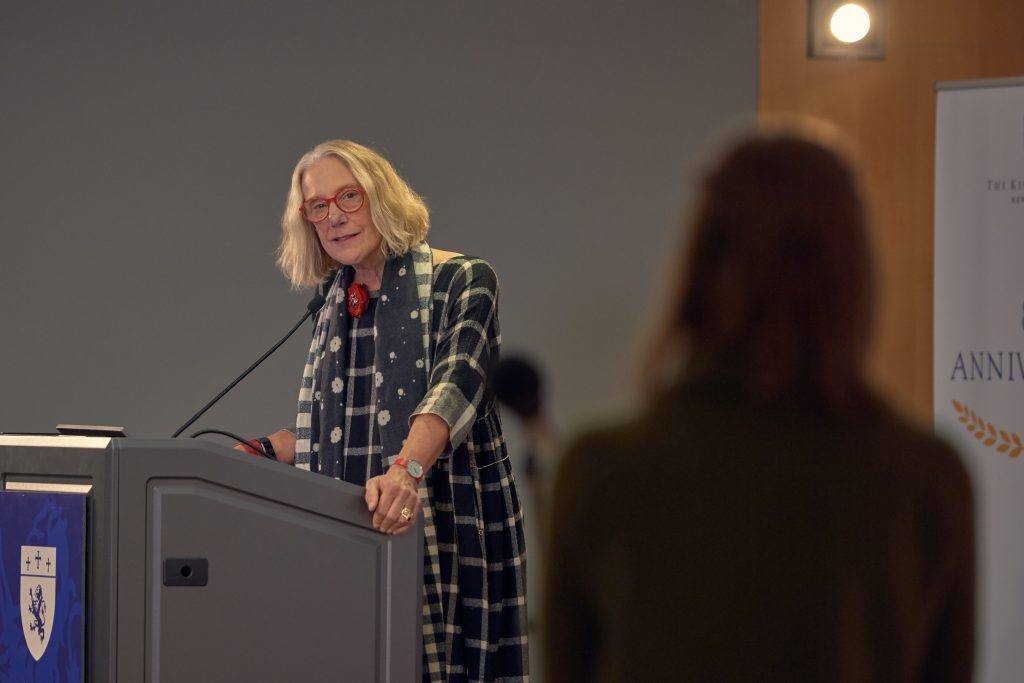Roberta Ahmanson Discusses Why Beauty Matters
On November 15, the McCandlish Phillips Journalism Institute at The King’s College hosted art connoisseur and philanthropist Roberta Ahmanson for a lunchtime lecture on art and beauty.

On November 15, the McCandlish Phillips Journalism Institute at The King’s College hosted art connoisseur and philanthropist Roberta Ahmanson for a lunchtime lecture on art and beauty. Students and faculty across all academic disciplines attended, which was fitting because she explained that beauty is for all. It can reach the rich and poor, the weak and strong, everyone, everywhere, equally.
Paul Glader, director of the McCandlish Phillips Journalism Institute, said, “Roberta reminded us that the concept of beauty is important to the church. She explained how the Christian church has incubated art over the centuries and why beauty, truth and art are connected in religious traditions, particularly the Christian tradition. She also made a case that while art and beauty are not the same thing, the concept of beauty should never be considered out of fashion in the art world, in the church or in one’s life. She suggested that beauty often gives us a glimpse of God.”
At the beginning of the lecture, Ahmanson gave the simplest answer to why beauty matters. “There’s so much ugly,” and we need beauty to combat it. But more importantly, quoting Psalm 145, she answered that God’s beautiful works reveal His glory and make His might and kingdom known to man. “That’s what Beauty does,” she said. “It tells us who God is.”
As indicators of our appetite for beauty, Ahmanson pointed to the booming cosmetics industry, Hollywood standards and arguments over what constitutes art. But makeup is a mere shadow of true beauty, she said, reading from Dave Hickey’s The Invisible Dragon: Four Essays on Beauty: “Beauty is not a thing. The Beautiful is a thing.” And, Ahmanson added, “Whatever Beauty is, it is not perfection, at least not in this world.”
Beautiful things move us in ways that words and reason cannot. Ahmanson shared an anecdote from her travels with her husband to illustrate. While vacationing in Lithuania, they visited a hill near the capital Vilnius, where hundreds of crosses are planted. Metallic and wooden, ornamented and simple, these crosses are a testament to centuries of Catholic tradition despite attempted removals during each regime change over the centuries. Ahmanson was brought to tears by the “tangible witness to indomitable faith.” The same can be said of the Hagia Sophia and other man-made masterpieces that reflect God’s love for us.
Ahmanson discussed the role of beauty in the Church as well. Christians historically have not always agreed on the proper role of art, leading to spartan houses of worship among some denominations and monumental cathedrals in others. Today, though modern artists may still resist beauty in art for a variety of reasons, religious trends in England have demonstrated the importance of beautiful art. According to a 2017 report from the London Telegraph, 13% of British Christians between ages 11 and 18 converted after visiting a church or cathedral. There is something glorious about a building dedicated to and decorated for the worship of God.
Art can also enable Christians to minister to others. Ahmanson shared reports of a Coptic priest who carved a church out of a rock face as a ministry center for both Christians and Muslims. The breathtaking outcome is a sanctuary that fosters literacy, health, education and spiritual growth.
However, Ahmanson cautioned, everything good can also be turned to evil. As early as the first lie in Garden of Eden, the desirable appearance of the fruit in the Garden tempted Eve to believe the serpent. The book of Ezekiel tell us that the Israelites made the same mistake by perverting and idolizing their beauty; they “used it to hold power over others” rather than using it as a gift from God “to draw people to their Creator.”
“Though I don’t think it is necessary to good art, I do think beauty is necessary to a good life,” Ahmanson concluded. Art only needs to communicate truth well, and sometimes beauty is instrumental in that. Beauty has the power to transform lives and prepare us for God’s kingdom. “Beauty is what we were born for,” she said. “It is the goal of our striving, our reward when we reach home, the source of all delight, the hope of the world and the eternal glory of God.”
Roberta Ahmanson’s lecture on beauty was followed by a short Q&A session.






